What Makes Something “Ceramic”?
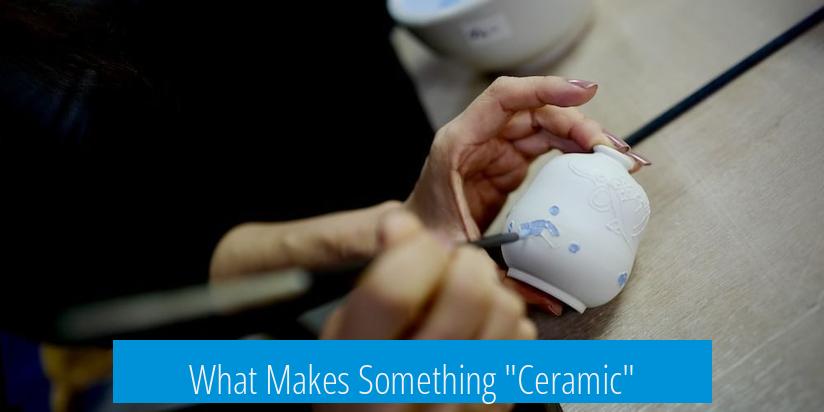
Ceramics are inorganic, nonmetallic solids processed by heat to form hard, brittle materials with high heat and chemical resistance. This definition includes a wide range of substances, from traditional silica-based ceramics to unusual examples like ice. Their common traits stem from their atomic structure and processing methods.
Definition and Composition
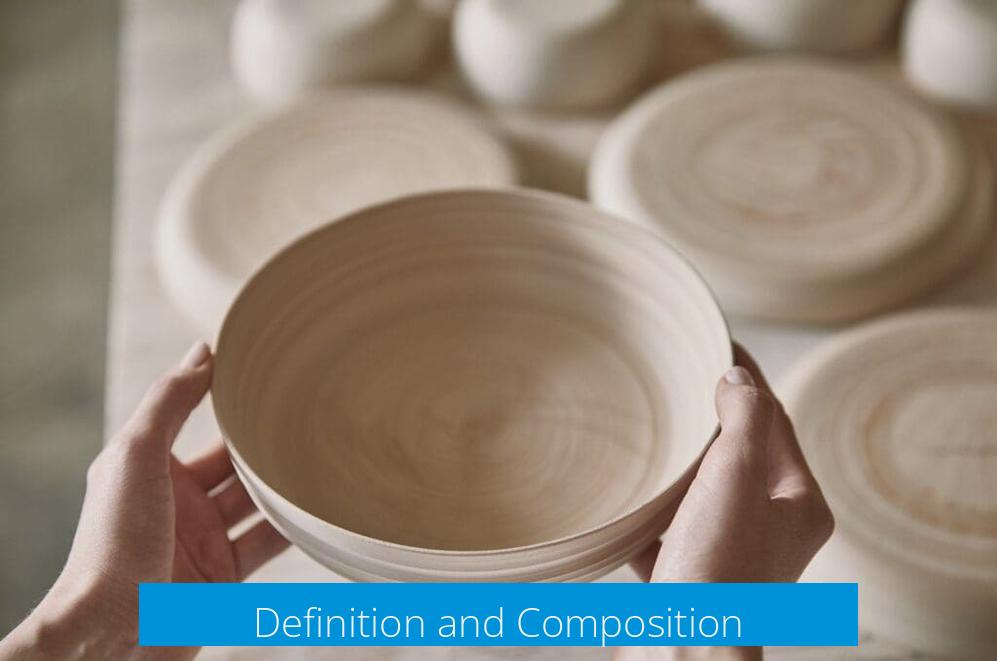
- Ceramics consist primarily of a 3-dimensional matrix material, often arranged in graphitic-type structures.
- Mainly composed of silica, carbon, and other inorganic elements including metals, though the overall material remains nonmetallic.
- They are inorganic solids and not metals, which distinguishes ceramics from metals and polymers.
- Even nontraditional solids like ice can fit into an expanded ceramic definition due to their inorganic, nonmetallic nature.
Physical and Chemical Characteristics
- Ceramics lack a glass transition temperature familiar in polymers. This means they don’t soften gradually but instead remain rigid until breaking.
- Their highly cross-linked chemical bonds make ceramics brittle; they cannot absorb or deflect stress and tend to fracture under force.
- These materials exhibit strong resistance to heat, meaning they withstand very high temperatures without melting or decomposing.
- Ceramics resist chemical attack and corrosion, allowing them to function well in harsh environments.
Formation and Processing
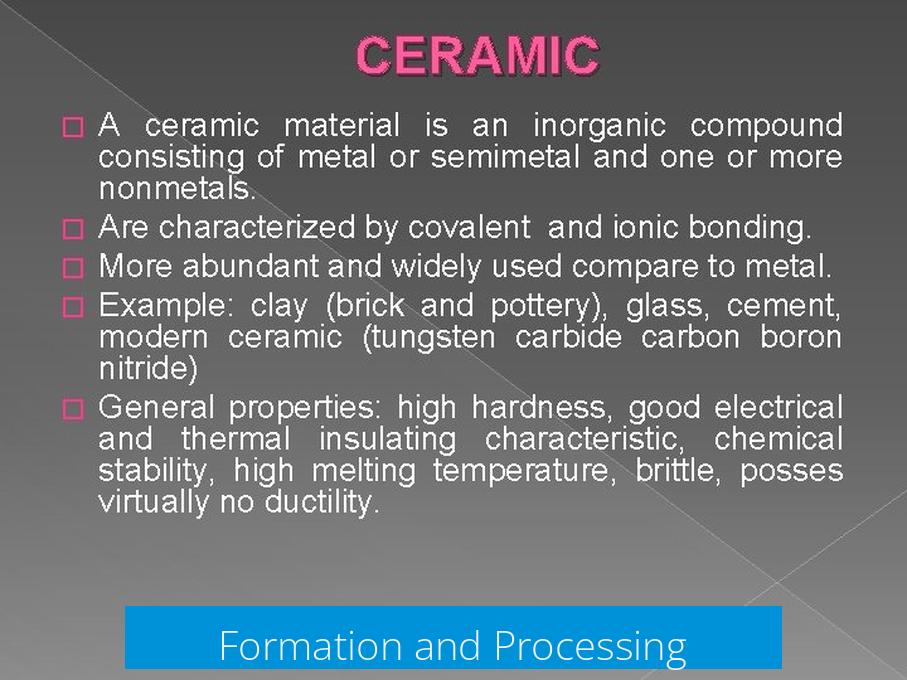
- Ceramics form by heating precursors which harden into rigid solids through processes like pyrolysis and graphitization.
- Polymer-derived ceramics use silica-based polymers that crosslink during heating, locking shape before volatile components evaporate.
- At elevated temperatures (~1300°C), atomic bonds rearrange, creating carbon-rich (graphitic) and silica-rich domains.
- Some ceramic types allow morphology control to improve mechanical properties, though these methods are complex.
- Ceramics are usually formed before heating, thus excluding certain hot-formed materials like conventional glasses.
Applications and Innovations
- Polymer-derived ceramics permit advanced manufacturing techniques such as 3D printing.
- This capability is valuable for complex geometries, including rocket engine parts.
Alternative Views
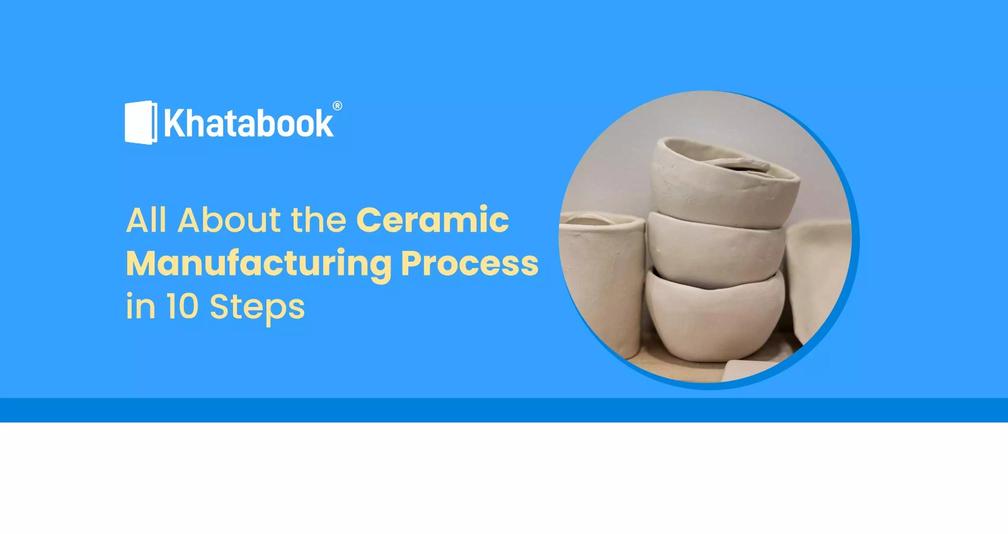
Some consider ceramics as glass-like materials containing metals or other inclusions, reflecting their often amorphous or partially crystalline nature mixed with metallic elements.
Key Takeaways
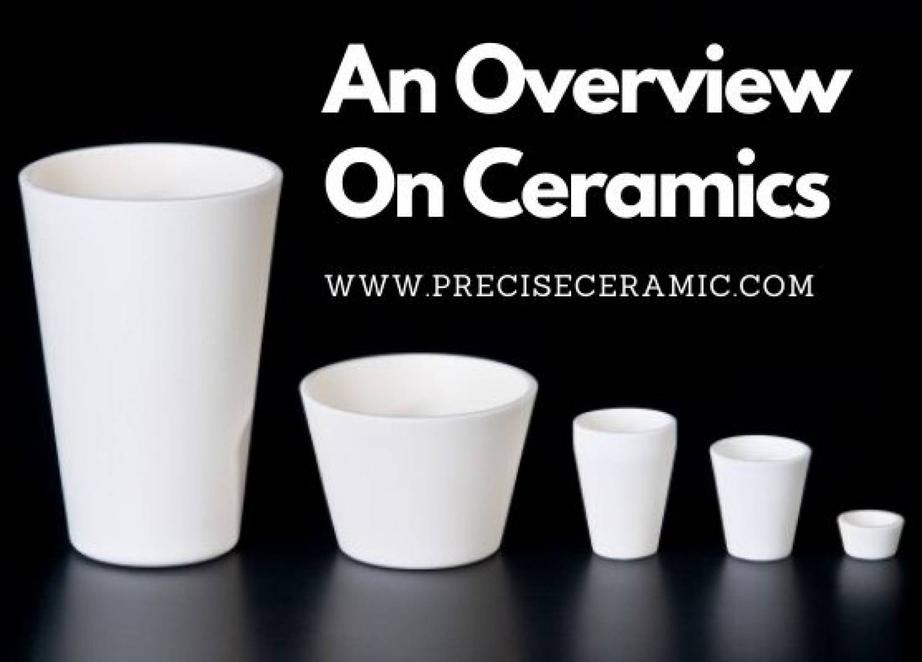
- Ceramics are inorganic, nonmetallic solids heated into hard, brittle forms.
- They typically consist of silica, carbon, and other inorganic compounds.
- Their atomic structure causes brittleness and heat resistance.
- Polymer-derived ceramics offer custom shapes through controlled heating and 3D printing.
- Broad definitions even include materials like ice as ceramics.
What Makes Something “Ceramic”? Digging Into the Mystery
So, you’re staring at a mug, a tile, or heck—maybe even a rocket engine part—and wondering: what makes something “ceramic”? Let’s break down this sneaky little question with a fresh angle. Ceramics aren’t just fragile pottery you find at grandma’s house—they’re a diverse group of materials with fascinating science behind them.
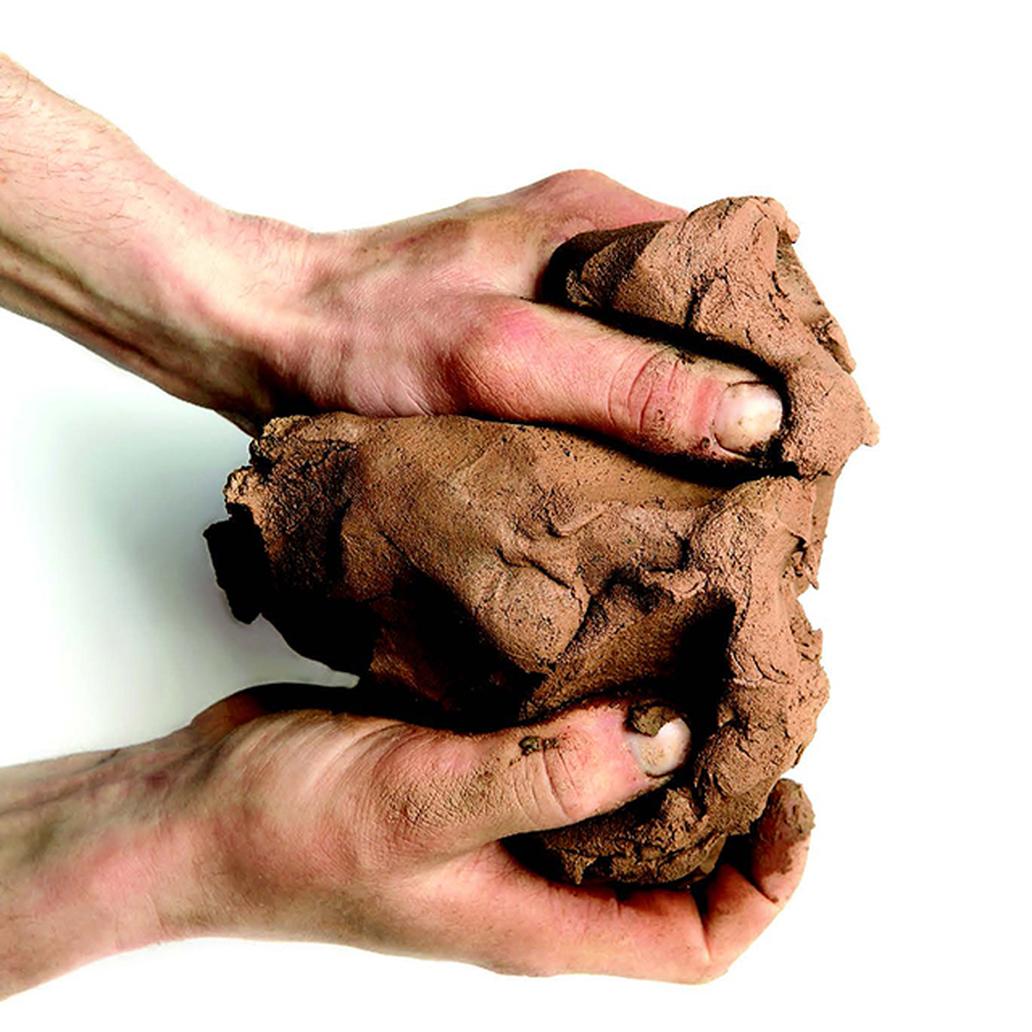
What Is Ceramic, Anyway?
At first glance, ceramic might seem straightforward, but it turns out ceramics are basically 3-dimensional matrix materials arranged in a graphitic-type structure. Imagine a molecular web locking things firmly in place. This web largely consists of silica and/or carbon, but it can also host other inorganic bits like metals. In fact, the broadest way to define ceramics is that they are inorganic, nonmetallic solids formed by heat processing.
Here’s a fun twist—the definition is so broad that even ice counts as a ceramic! Yes, that’s right, your average ice cube technically qualifies because it’s a nonorganic solid without metals. Who knew your drink came with a tiny lesson in materials science?
Brittle but Tough: Understanding Ceramic’s Nature
Ceramics have some quirky physical traits. For one, they lack a glass transition temperature. In layman’s terms, they don’t soften gradually like many plastics do. Instead, ceramics tend to break suddenly—that’s the infamous brittleness from their highly crosslinked atomic structure. Molecules in ceramics don’t wiggle or slide around much, so when stressed, they snap without warning.
Despite being brittle, ceramics shine in other ways. They’re incredibly resistant to heat and corrosion. Imagine a material that won’t melt easily and laughs in the face of acids and chemicals—this suits applications ranging from kitchen tiles to airplane engines.
How Do Ceramics Form? The Heat is On
Ceramics go through a unique birth story involving heat. Before firing, many ceramics are shaped like clay, but the key is that heat transforms them into hard solids. This heat processing is crucial—it’s what changes the structure, enhancing strength and durability.
A particularly fascinating method is the “polymer-derived ceramics” approach. Starting with a silica-based polymer, heating causes the polymer to crosslink into a rigid 3D network. Then comes pyrolysis—a heat treatment that breaks unstable parts away and leaves behind a carbon-rich matrix intertwined with silica. This process even leads to something called “graphitization,” where carbon atoms rearrange into graphite-like domains at about 1300°C.
Does this sound complicated? Absolutely. But it’s this interplay of structure and heat that gives polymer-derived ceramics the edge, especially since they can be 3D-printed. Yes, the same technology used for fun plastic toys is valuable for making complex rocket engine parts—geometry and precision matter to engineers.
A Different View: Is Ceramic Just Glass with Metals?
Some people think of ceramics as basically glass embedded with metals or other inorganic materials. This intuition isn’t far off. Ceramics share properties with glass like hardness and brittleness but often have reinforced structures making them more diverse and functional. Glass itself is considered a ceramic because it’s an inorganic, nonmetallic solid processed by heat, but its internal atomic arrangement is more disordered than traditional ceramics.
Why Does This Matter? Practical and Everyday Benefits
Understanding what makes ceramics special reveals why they’re everywhere—from your coffee cup to space exploration gear. Their hardness and resistance to heat and chemicals make them ideal for cookware, electronics, and even medical implants. The ability to tailor ceramics on the microscopic level means engineers can design materials with specific traits, such as toughness or electrical insulation.
Take polymer-derived ceramics: their 3D printability allows designers to create intricate shapes not possible with conventional methods. Imagine a rocket engine nozzle with internal cooling channels that traditional manufacturing can’t produce efficiently—3D-printed ceramics make this possible.
Final Thoughts: Breaking the Ceramic Code
What makes something ceramic boils down to a unique combination of composition, structure, and processing:
- Inorganic and nonmetallic makeup mainly of silica and/or carbon
- Formation through heat, locking the shape into a tough, brittle network
- Physical traits including brittleness, heat resistance, and chemical inertness
- Advanced manufacturing techniques like polymer-derived ceramics and 3D printing expanding possibilities
So next time you pick up a ceramic mug or admire a tile, remember there’s a complex molecular dance happening within. Ceramics are more than just hard and breakable—they’re a marvel of materials science harnessed by humans for thousands of years and still evolving in remarkable ways.
Isn’t it amazing how a simple question can crack open such a rich world? What everyday objects around you do you think might hide fascinating ceramic secrets? Go on, take a closer look—you might just find some icy ceramics chilling in your freezer.
What defines a material as ceramic?
Ceramics are inorganic, nonmetallic solids processed by heat to form hard materials. They often consist mainly of silica or carbon and have a 3-dimensional matrix structure.
Why are ceramics brittle?
Ceramics have a highly crosslinked chemical structure. This limits molecular movement, so they break instead of bending or deforming when stressed.
How does heat processing affect ceramics?
Heating transforms pre-shaped materials into hard solids. It can also cause graphitization, where carbon atoms rearrange into graphite-like domains within the ceramic.
Can materials other than traditional solids be considered ceramics?
Yes. Ice, for example, is a nonmetallic, inorganic solid and can be classified as a ceramic based on the broader definition.
What is unique about polymer-derived ceramics?
They start as silica-based polymers that crosslink and pyrolyze when heated. This process locks shapes and creates carbon and silica domains, allowing complex forms like 3D-printed parts.





Leave a Comment